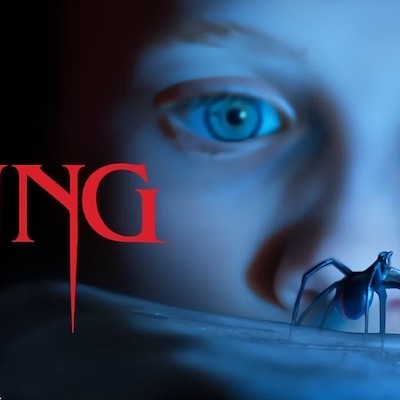Check out our interview with Cathy Rigby.
The setup: From the magical theatrical moment when Cathy Rigby catapults through the Darling nursery room windows, trailing glittering pixie dust in her jet stream, she's the epitome of J.M. Barrie's immortal boy who wouldn't grow up. She gives this mythic world-renowned character a feisty all-American can-do spin, flip, and handspring, making Master Peter Pan her own. It's a definitive reading, and she's an utter joy. Presented by Theatre Under the Stars, this recently refurbished edition of the classic Jerome Robbins production (1954), which starred Broadway immortal Mary Martin, retains all the youthful spirit and bounce of the original -- and then some.
The execution: There have been versions upon versions of Peter Pan, ever since he first appeared in a minor role in Barrie's novel The Little White Bird (1902), as a one-week-old baby who flies about after dark in Kensington Gardens cavorting with the fairies. Pan originated from the fanciful tales Barrie told to entertain the children of Arthur and Sylvia Davis. He had enchanted young George, Jack, and baby Peter (soon to be followed by Michael and Nico) since meeting them in Kensington Park in 1897, and before too long had joined the family as official baby sitter, somewhat tutor, and then trustee and guardian of "the tribe" once the parents died.
The boys' playtime adventures as pirates and Indians inspired Barrie like a drug. He expanded Pan's basic premise, deepened it with his own personal demons, added whimsy, and turned it into his greatest work for the stage, Peter Pan, or the Boy Who Wouldn't Grow Up.
The play was an international smash and appeared in London for more than 80 years in a special Christmas-time production. The American version, a standard edition for years with acting icon Maude Adams in the green-pants role, was no less successful. In 1950, a revival with incidental songs and lyrics by Leonard Bernstein, starring movie legends Jean Arthur and Boris Karloff, kept the boy youthful and glowing. Then Disney (1952) turned Barrie's tale into wondrous animation with its own marvelous score and visual invention. The time was ripe for a full-fledged Broadway musical.
Choreographer Jerome Robbins was the "it" boy of the moment, with a string of acclaimed works for New York City Ballet and American Ballet Theatre and three hit Broadway shows as dance master: On the Town, Call Me Madam, and The King and I. The Pajama Game, his subsequent must-see show, opened while Pan was in rehearsals. Mary Martin, basking in the glow from South Pacific, had been contracted for the role of Peter and insisted on Robbins as guiding light. It was one of the wisest moves of her career. Robbins brought fresh, childlike glee to the material along with a savvy showbiz energy.
When the West Coast previews proved unsatisfactory to all backers -- NBC being the major producer, who wanted Pan to be telecast "in living color" on its Producers' Showcase -- the score by Moose Charlap and Carolyn Leigh ("Tender Shepherd," "I've Gotta Crow," "Flying" "I Won't Grow Up" and "Pirate Song") was augmented by Broadway vets Jule Styne and Betty Comden and Adolph Green ("Never Never Land" [adding an extra non-Barrie "never" to make the line scan], "Ugg-a-Wugg," "Hook's Waltz," "Wendy," "Distant Melody," and a comic operetta duet for Pan and Hook, "Mysterious Lady," The show fell into place.
Hook was now a Restoration pirate with Charles II wig who was carried onstage in a sedan chair. Whenever he needs inspiration to hatch one of his nefarious plots to capture Peter, he asks for a dance tune: "What tempo, Cap'n? A tarentella, Smee..." Tiger Lily wore tennis shoes, making her a very American Indian. Peter now had his ballad and the show a theme. The show bursts with childlike wonder, vaudeville comedy, and Broadway know-how.
This recent production follows its immediate predecessors' cuts: no sedan chair, no enchanted animals, no sneakers, no duet, replacing them with a Vegas-inspired Tiger Lily (Jenna Wright) surrounded by Cirque du Soleil Indians. While the show's been pared down, it still retains its great bones. The flying's been amped up so Rigby can somersault while zooming overhead, which is great fun to watch, and Hook (a droll Brent Barrett) is much less of a fop.
The nursery still breaks away with wonder as the children fly off on their adventures, and Hook is delightfully wicked with that dashing charm that Barrie gave him: he curses with "split me infinitives" and "bicarbonate of soda." And, yes, we're still implored "to clap our hands if we believe in fairies" to save the life of Tinker Bell. The show throws one back into childhood without apologies.
Then there is the phenomenon that is Cathy Rigby. She makes Peter Pan her own. A veritable blaze of energy, her husky voice is boy-friendly as she eats up every inch of the stage. She's ablaze, a tiny toned ball of determination and grit. She doesn't walk over the stage, she tumbles, vaults, springs, balances, and cartwheels. She's on constant boil. If her boundless electricity could be harnessed, she could light up downtown for a decade.






